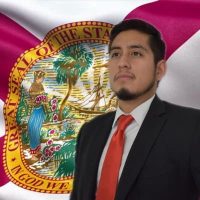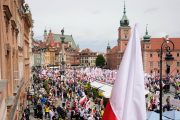
“I think many Western countries were thinking that this was a short-term problem,” Finnish Defense Minister Antti Häkkänen recently said of the conflict between Russia and Ukraine. “But now I think that in the U.S. and in NATO countries, almost everyone knows that this is the end of the last 30 years. Now we’re going into some kind of a new cold war.”
The remarks, made to Politico, encapsulates a realization among the ruling class of the United States and its allies in Europe, who now find themselves forced to accept that not only is the war in Ukraine less winnable than they had initially hoped, but that the war itself is simply part of a broader, long-term struggle between U.S. hegemony and the challenging world order advanced by Moscow and Beijing.
“Russia has the capability and the ability to go on with this war for years,” Häkkänen said while in Washington, D.C., this week. “Many are overestimating that the West is winning this, that Ukraine is winning.”
While 2023 began with optimism that a Ukrainian counteroffensive would put hundreds of square miles of Russian-occupied territory back into Kiev’s hands, the reality has been one of little territorial gain — even at the cost of enormous casualties.
Finland, like other European nations, has continued its support of Ukraine. Just this month, the Finnish government announced that it will double its ammunition production in order to hand much of it over to Ukraine, which is dealing with eroding supplies from its western allies. The project is being carried out with $25 million in seed money from the government and investments by NAMMO, a top Norwegian defense firm with major operations in Finland.
Moreover, the project has multiyear contracts signed by the government to ensure the work goes on for years to come. In total, between public and private investments, the contracts will amount to $1.3 billion from 2024 to 2030.
One challenge for Ukraine has been securing this type of long-term deal from the United States and many European partners, where governments have been hesitant to make long-term defense spending commitments. As a result, the biggest defense firms have been reluctant to put down their own money toward Ukraine, fearing that governments will eventually pull out and leave the contractors to pick up the tab, losing their money.
For example, the European Union earlier this year announced a lofty goal of sending Ukraine one million 155mm artillery shells by the end of the year and designating $1.1 billion specifically for that purpose. However, the plan fell far short of the goal — only 300,000 shells were sent by November.
Meanwhile, the Biden administration in D.C. is out of money for the Ukraine war machine. Currently, the White House is holding out for $60 billion found in a supplemental request that is currently stalled in Congress due to a debate over border policy.
And in Europe, a $54 billion financial-assistance package for Ukraine has also been tied up because of objections from Hungary, whose opposition prevents the unanimous decision needed to give approval in the 27-member bloc.
Some European nations have been supplying Ukraine individually. Germany recently upped its assistance to Kiev, and various British defense firms have come to small co-production agreements with Ukrainian counterparts for the purpose of repairing armored vehicles and building new artillery systems.
Despite these overtures, the overall bleak outlook has some political leaders reining in their optimism. As Politico notes:
And while visiting the Ukrainian capital on Monday, Czech President Petr Pavel said “we are very likely to see some significant developments” throughout 2024 in the conduct of the war, not all of which will be welcomed in Western capitals.
“The indications so far are that it will not be, in the best sense of the word, as we would like it to be,” he said, adding that Russia’s renewed industrial capacity will begin to create “a new situation that we will have to deal with.”
Nevertheless, Häkkänen still holds out hope. “Ukraine has a good chance to win this because Western countries have bigger economic muscles and can ramp up their defense industry to the kind of levels that Russia can’t compete with,” he said. “We can do it, and Ukraine can, but it needs decisive steps from Western countries.”
That East and West are involved in a new cold war is clear. And the Russia-Ukraine war has demonstrated that, in this cold war, Moscow is far stronger than the Western military establishment previously gave them credit for. Through its partnership with China and other key allies, Russia has created an economic, diplomatic, and defense network that effectively insulates it from the sanctions and socioeconomic strong-arm tactics that were long at the heart of U.S. soft power and hegemony.
The previous Cold War saw the dissolution of the USSR. Will this Cold War see the collapse of other great powers?




